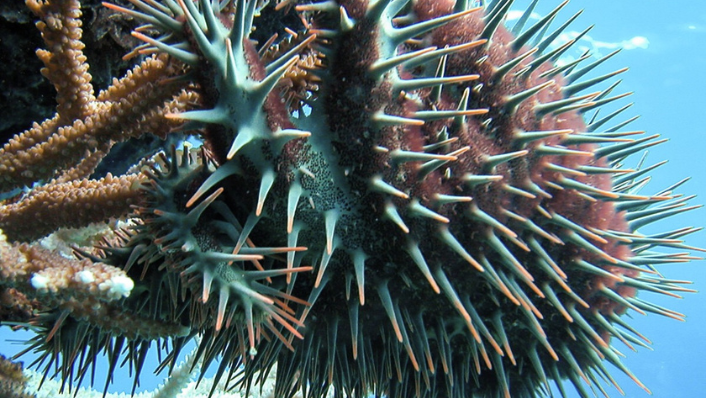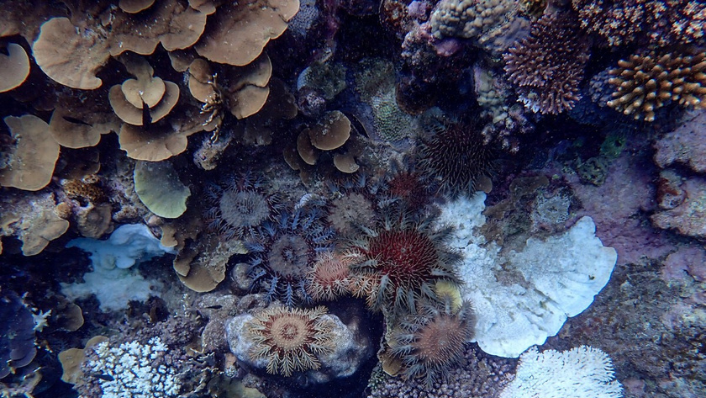Researchers have found a new, naturally derived technology that could help control outbreaks of the coral-munching crown-of-thorns starfish - by mimicking one of its own scents.
It is based on a discovery by scientists from the University of the Sunshine Coast (UniSC), the Australian Institute of Marine Science (AIMS) and Japan's Okinawa Institute of Science and Technology (OIST) that the starfish uses its characteristic spines to 'smell' peptides released by other individuals and communicate with one another.
Using those insights, the research team created synthetic peptides (short chains of amino acids involved in messaging between cells and between organisms) that consistently attract coral-eating starfish in the laboratory. The results have just been published in iScience .

Crown-of-thorns starfish (or CoTS for short) are native to the Great Barrier Reef and Indo-Pacific region and feast on hard coral. A single CoTS can consume up to 10 m2 of coral tissue each year, and when present in low numbers their preference for fast-growing corals can help enhance coral diversity.
However, thousands of starfish can appear on reefs during outbreaks, stripping hectares of hard-bodied, reef-building corals in just a few months, degrading reef health and stability and preventing reefs from adapting to their greatest and on-going threat: climate change. Four waves of COTS outbreaks have been recorded on the Great Barrier Reef since the 1960s.
Currently, the main method of combatting crown-of-thorns outbreaks is by manually culling each starfish one-by-one. This form of CoTS control has shown to be effective in protecting corals at regional scale s; however, it is labor-intensive, and costly.

UniSC Professor Scott Cummins said the study pointed toward a potential lure-inspired technology.
"Using synthetic attractants to draw starfish to a single location could support the simultaneous removal of many in one efficient sweep," he said.
"Further development of these synthetic peptides holds real potential for a targeted and environmentally safe control strategy."
Professor Noriyuki Satoh, head of the Marine Genomics Unit at Okinawa Institute of Science and Technology said genomic and proteomic analysis by the research team led to the discovery that the starfish uses its spines to both sense and secrete a wide range of peptides - not just defensive toxins.
"These may promote swarming, and so we synthesised the peptides that we suspected function like pheromones for communication and found that they consistently affect the trajectories of the starfish," he said.

Further testing in behavioural trials was conducted at the Australian Institute of Marine Science's National Sea Simulator.
Dr. Cherie Motti of AIMS said the synthetic peptides - which were confirmed to be non-toxic - consistently altered the movement patterns of the starfish, even at low concentrations.
"We saw the starfish responded in predictable and measurable ways."
"The approach, has only been tested in the laboratory, but it shows real promise and demonstrates the value of innovative thinking and research in addressing this decades-old problem."

This research is part of the COTS Control Innovation Program (CCIP) , funded by the partnership between the Australian Government's Reef Trust and the Great Barrier Reef Foundation.






